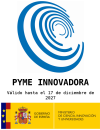Augmented, Virtual or Mixed Reality? Main differences and applications
More and more software and digitalization solutions are betting on augmented reality, virtual reality or mixed reality to meet the needs of highly demanding sectors. Aviation, industry 4.0, professional training or occupational risk prevention are just some examples of markets that demand innovation in this area and comprehensive solutions such as our remote assistance and training tool Skylife Infinity. However, there are still occasions in which its application and the differences between the different types of digital realities end up mixing.
Differences between virtual reality, augmented reality and mixed reality
Broadly speaking, the main difference between them lies in the degree of integration between the virtual and real worlds. That is to say, while virtual reality immerses us integrally in a world created from scratch, without any connection to the physical plane, augmented reality incorporates virtual elements into a real environment, thus complementing its impact and scope. On the other hand, mixed reality, as its name suggests, introduces us to a hybrid environment, where both planes are combined, obtaining maximum performance.
Virtual reality (VR) and its applications
As mentioned above, virtual reality is a technology that inserts the user in a completely virtual and fictitious environment, enabling interaction with equally digital elements through the detection of movements. With this technology, the immersion experience is total and we rely on a complete and exhaustive simulation of the environment so that its resemblance to reality is as close as possible. For this, closed glasses or helmets are required, which incorporate a screen that serves as access to the artificial world and prevents vision beyond the Virtual Reality (VR) shown by the screen. This device also has a series of sensors that recognize the movement of the head to reproduce it virtually.
The main applications of virtual reality in the industrial and vocational training field are:
-Training and professional training in risky environments or situations.
-Training and simulation of complex environments
-Reduction of the learning curve and increase of retention in professional training thanks to total immersion.
The main example of Virtual Reality that you can find in Skylife is Infinity Training, an immersive training solution using simulators that allows to rehearse complex technical procedures or risk situations in a safe, inexpensive and space-saving environment.
Augmented Reality (AR) and its applications
In this technology, we start from the real world and add directly to this environment a series of virtual elements that contribute to generate an enriched experience. These elements can be objects, animations, data or virtual interfaces with which to interact. Augmented reality can be used with specially designed glasses or even with the cell phone or tablet, whose camera records the real environment and displays it on the screen with the digital elements overprinted.
The main applications of augmented reality in the industrial sector are:
-Remote assistance service, allowing the expert technician to interact in the field with the field technician without displacements.
-Receiving remote technical indications directly in the field.
-Infinity Mentor is Skylife's solution that uses augmented reality for remote assistance, allowing qualified personnel to be available from anywhere and at any time to assist operators, avoiding occasional production stoppages or downtime caused by travel.
Mixed reality (MR) and its applications
As its name implies, mixed reality combines the best aspects of virtual reality and augmented reality to achieve an experience that adapts to the needs of the action. In other words, with mixed reality we can interact with real objects within a virtual world, or reproduce virtual elements in the real environment. Generally, this technology generates a 3D model of reality and overlays virtually created information on it, thus achieving enriched content of value for the user.
The main applications of mixed reality in industrial environments:
-Interactive guidance to the technician in complex operations.
-Reduction of the learning curve in technical training
-Reducing the cost and error rate in maintenance operations.
Skylife, innovation through Virtual, Augmented and Mixed Reality.
In all three cases, the applications are endless. At Skylife we are committed to innovation in the three technologies according to the needs of each situation, thus maximizing the possibilities and characteristics of each one and applying them to highly demanding sectors such as aviation, industry 4.0, professional training or occupational risk prevention. Along these lines, we have launched the Skylife Infinity suite of digitization solutions, which allows us to use the latest technological trends applied to real solutions and needs.




















